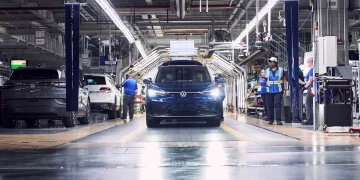The global economy is undergoing a profound transformation, fueled by the growing importance of Environmental, Social, and Governance (ESG) criteria in investment strategies. As the world shifts toward more sustainable practices, carbon tariffs are emerging as a critical tool for countries to address climate change. Yet, despite their best intentions, these tariffs may inadvertently open new avenues for capital to flow into emerging markets.
In this article, we will explore how ESG is reshaping global investment trends, how carbon tariffs work, and why emerging markets with “carbon tariff loopholes” could soon become the new battleground for capital in the fight for sustainability.
1. The Rise of ESG: A New Era in Investing
The concept of ESG investing is not new, but it has gained significant traction in the past few years. ESG focuses on assessing companies not just on their financial performance but also on their impact on the environment, society, and governance structures. Investors are now prioritizing companies that demonstrate a commitment to sustainability, ethical labor practices, and robust corporate governance.
The ESG Revolution: Why It Matters
ESG investing has transitioned from a niche concept to a mainstream strategy. This is largely driven by the growing concern over climate change, human rights, and income inequality. The rapid expansion of ESG investments is largely a response to the awareness that companies that neglect these factors may face reputational risks, regulatory penalties, and, ultimately, financial loss.
Financial institutions, pension funds, and asset managers are increasingly aligning their portfolios with ESG principles. Governments and regulators are also stepping up, mandating greater transparency on sustainability issues and pushing for climate-related disclosures. This, in turn, has led to greater integration of ESG criteria into decision-making processes across industries and sectors.
Global ESG Trends
The shift towards ESG is not limited to the West. Investors in Asia, Africa, and Latin America are also aligning their strategies with sustainability goals. According to recent reports, ESG assets are expected to exceed $50 trillion globally by 2025. The demand for sustainable investment vehicles, from green bonds to carbon-conscious funds, is accelerating as institutional investors are increasingly looking at long-term, sustainable returns rather than short-term gains.
2. Carbon Tariffs: The New Policy Frontier
As part of the global effort to combat climate change, carbon tariffs have emerged as a novel policy tool. These tariffs, also known as carbon border adjustments, are designed to put a price on carbon emissions embedded in imported goods, ensuring that foreign products do not have a competitive advantage over domestic products in countries with stringent climate policies.
What Are Carbon Tariffs?
A carbon tariff is essentially a tax on imported goods based on the carbon emissions generated during their production process. The idea is to prevent “carbon leakage,” where companies in high-emission countries shift their operations to jurisdictions with looser environmental regulations, undermining global climate efforts.
The European Union is one of the pioneers of carbon tariffs, with its Carbon Border Adjustment Mechanism (CBAM), which came into force in 2023. This mechanism applies to a range of products, including cement, steel, and aluminum, all of which are carbon-intensive industries. The goal is to level the playing field for European companies and encourage international trade partners to adopt more sustainable practices.
How Carbon Tariffs Work
Carbon tariffs are typically levied based on the carbon intensity of the product being imported. Countries that have committed to reducing carbon emissions often have comprehensive carbon pricing systems—such as carbon taxes or cap-and-trade schemes—that determine the carbon footprint of goods. Products imported from countries without similar regulations would face higher tariffs to account for the carbon emissions they generate.
As global support for carbon tariffs grows, other regions such as the U.S. and China are also considering their own mechanisms. However, the implementation and enforcement of these tariffs vary, with some countries having advanced carbon pricing systems and others struggling to create effective frameworks.
3. Emerging Markets: The Wild West of Carbon Pricing
Emerging markets play a critical role in the global economy, particularly in sectors like manufacturing, mining, and agriculture—industries that are highly carbon-intensive. These markets also represent a significant portion of global greenhouse gas emissions.
However, many emerging economies have yet to adopt comprehensive carbon pricing mechanisms. This leaves a significant gap in global carbon regulation and, inadvertently, creates opportunities for companies operating in these regions to exploit loopholes.
Why Emerging Markets?
Emerging markets like India, Brazil, Vietnam, and South Africa often face significant economic challenges, including poverty, unemployment, and rapid industrialization. As a result, environmental policies take a backseat to immediate economic concerns, making these regions more attractive for companies looking to avoid stringent environmental regulations.
At the same time, the lack of robust carbon pricing systems means that these countries have an inherent competitive advantage when it comes to exporting carbon-intensive goods. Companies can produce goods at lower costs because they don’t face the same carbon pricing pressure that companies in more developed markets do. This creates an uneven playing field in global trade, which the introduction of carbon tariffs seeks to address.
The Loophole Effect
With the increasing adoption of carbon tariffs in Western markets, companies in emerging economies may soon find themselves subject to new carbon taxes. However, many of these regions lack the necessary infrastructure to measure and report carbon emissions accurately, leaving the door open for potential exploitation. This “carbon tariff loophole” offers an opportunity for capital to flow into these markets, where companies can take advantage of regulatory gaps.
For example, if a company in an emerging market such as India or Indonesia produces steel or cement with a relatively high carbon footprint, but without a national carbon pricing mechanism, it could export these goods to the EU at a competitive price—at least until the carbon tariff system is fully enforced. This provides an opportunity for foreign investors to exploit low-cost production in these regions while minimizing exposure to high carbon costs in their home markets.

4. Case Studies: Capitalizing on Carbon Tariff Loopholes
Let’s take a closer look at some real-world examples of how capital might flow into emerging markets with carbon tariff loopholes:
India’s Steel Industry
India is one of the largest steel producers in the world, yet the country has limited carbon pricing policies in place. India’s steel industry is highly carbon-intensive, but many steel plants continue to operate without any penalties for their emissions. In the face of the EU’s CBAM, Indian steel exporters could face significant tariffs when sending goods to Europe. However, for now, companies in India can continue to export steel to European markets at a lower price point than their European competitors.
Brazil’s Agriculture Sector
Brazil is a major exporter of agricultural products such as soybeans and beef, two sectors known for their high environmental impact due to deforestation and methane emissions. Brazil currently has limited carbon pricing policies in place, which means that the carbon costs embedded in its agricultural exports are not factored into the pricing of goods. As carbon tariffs come into play in Europe, Brazilian producers may face higher costs to export these products. However, until those tariffs are fully implemented, Brazilian farmers may find themselves in a favorable position to increase exports.
Vietnam’s Manufacturing Sector
Vietnam has become an increasingly important player in global supply chains, particularly in electronics and textiles. While the country has made strides in environmental policy, its carbon pricing systems are still developing. As carbon tariffs start to affect the export of products like textiles, manufacturers in Vietnam could benefit from lower costs, particularly if they are able to bypass carbon tariff enforcement loopholes.
5. Conclusion: The Future of ESG and Carbon Tariffs in Emerging Markets
As carbon tariffs become an essential tool in the fight against climate change, emerging markets are likely to see significant capital inflows driven by their relatively lenient environmental regulations. However, this trend presents both opportunities and challenges. While investors may be tempted to exploit carbon tariff loopholes, governments in emerging markets will need to act quickly to implement stronger environmental regulations and avoid becoming permanent “carbon havens” for businesses.
In the coming years, the interplay between ESG investments and carbon tariffs will shape global trade dynamics, particularly in emerging economies. As companies and governments work to navigate this evolving landscape, it will be crucial for investors to keep an eye on the carbon regulation gaps that may open up new markets for capital to thrive.














































